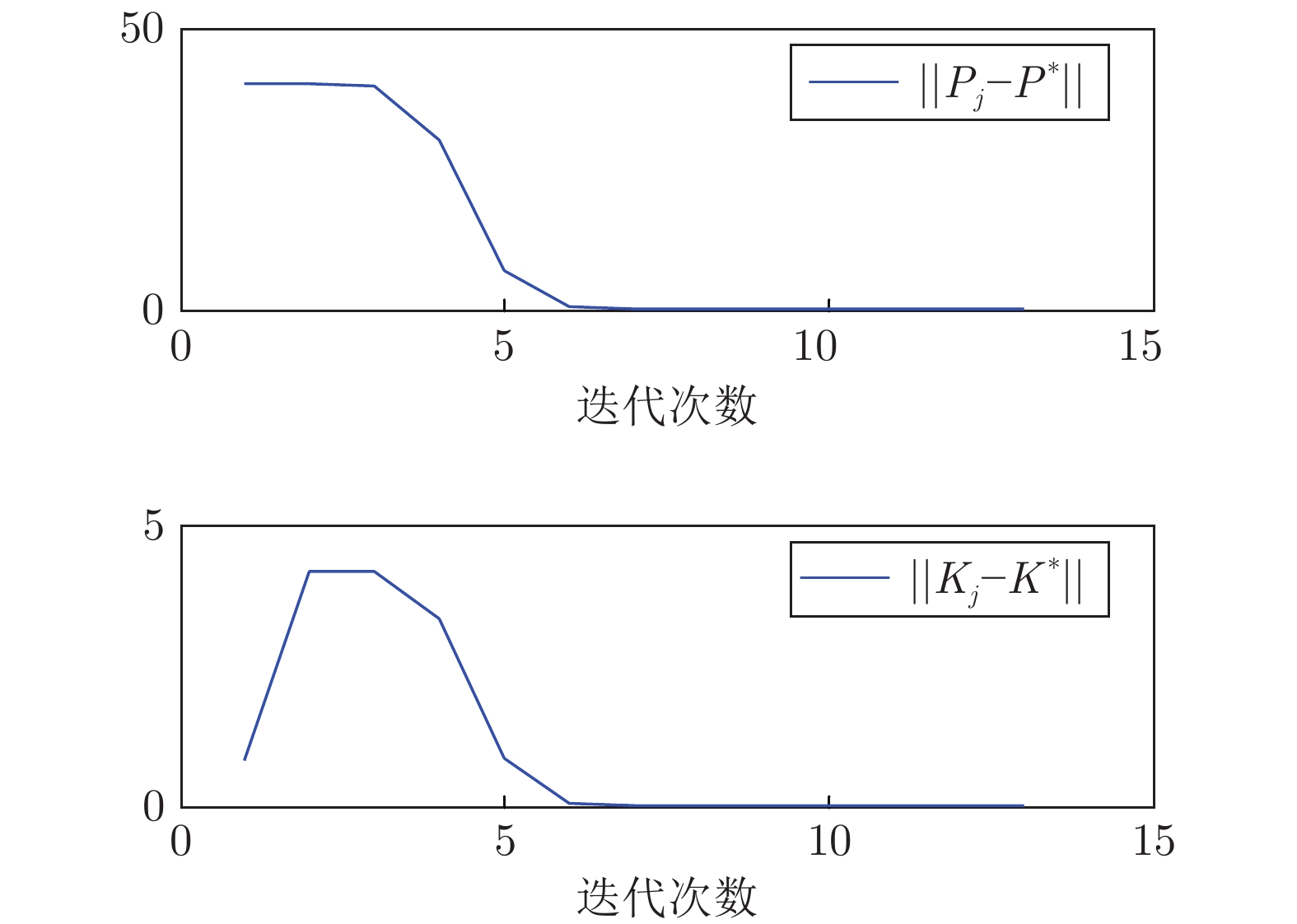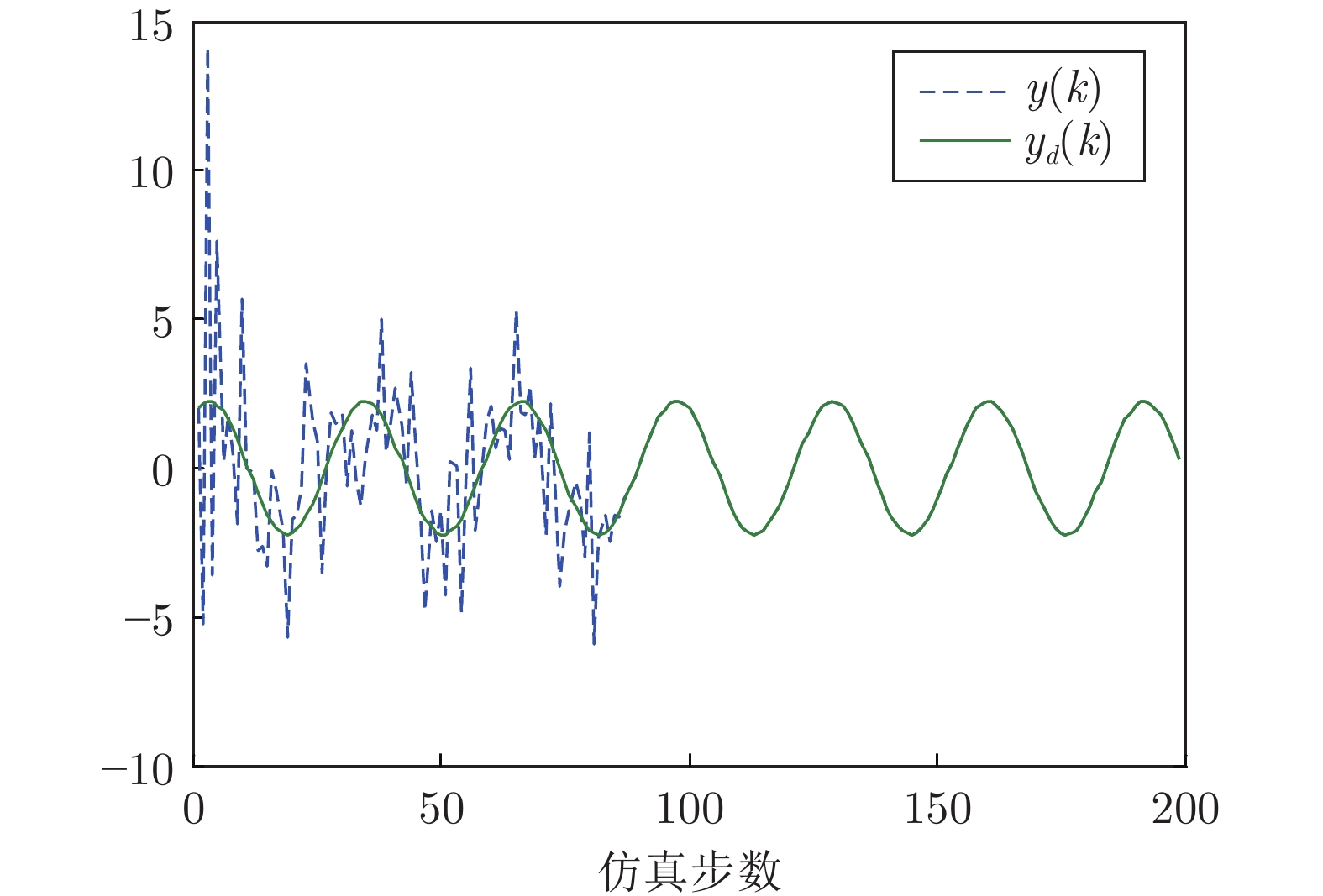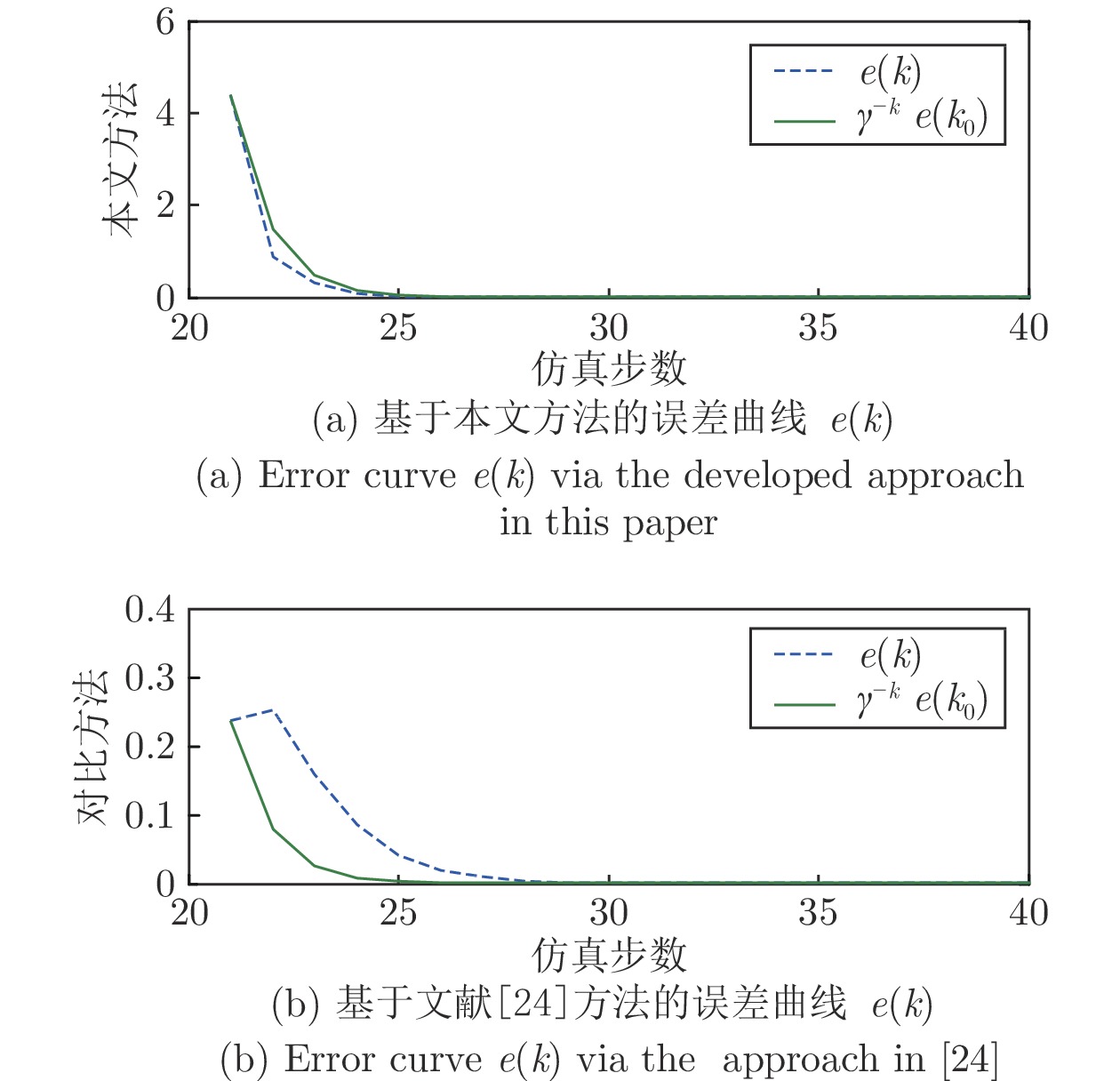|
[1]
|
Åström K J, Tore H. PID Controllers: Theory, Design, and Tuning. Research Triangle Park, NC: Instrument Society of America, 1995.
|
|
[2]
|
Garcia C E, Prett D M, Morari M. Model predictive control: theory and practice—a survey. Automatica, 1989, 25(3): 335-348. doi: 10.1016/0005-1098(89)90002-2
|
|
[3]
|
Francis B A. The Linear Multivariable Regulator Problem. SIAM Journal on Control and Optimization, 1977, 15(3): 486-505. doi: 10.1137/0315033
|
|
[4]
|
Isidori A, Byrnes C I. Output regulation of nonlinear systems. IEEE Transactions on Automatic Control, 1990, 35(2): 131-140. doi: 10.1109/9.45168
|
|
[5]
|
Ding Z T. Output regulation of uncertain nonlinear systems with nonlinear exosystems. IEEE Transactions on Automatic Control, 2006, 51(3): 498-503. doi: 10.1109/TAC.2005.864199
|
|
[6]
|
Huang J, Chen Z. A general framework for tackling the output regulation problem. IEEE Transactions on Automatic Control, 2004, 49(12): 2203-2218. doi: 10.1109/TAC.2004.839236
|
|
[7]
|
Parks P. Liapunov redesign of model reference adaptive control systems. IEEE Transactions on Automatic Control, 1966, 11(3): 362-367. doi: 10.1109/TAC.1966.1098361
|
|
[8]
|
田涛涛, 侯忠生, 刘世达, 邓志东. 基于无模型自适应控制的无人驾驶汽车横向控制方法. 自动化学报, 2017, 43(11): 1931-1940.Tian Tao-Tao, Hou Zhong-Sheng, Liu Shi-Da, Deng Zhi-Dong. Model-free Adaptive Control Based Lateral Control of Self-driving Car. Acta Automatica Sinica, 2017, 43(11): 1931-1940.
|
|
[9]
|
于欣波, 贺威, 薛程谦, 孙永坤, 孙长银. 基于扰动观测器的机器人自适应神经网络跟踪控制研究. 自动化学报, 2019, 45(7): 1307-1324.Yu Xin-Bo, He Wei, Xue Cheng-Qian, Sun Yong-Kun, Sun Chang-Yin. Disturbance Observer-based Adaptive Neural Network Tracking Control for Robots. Acta Automatica Sinica, 2019, 45(7): 1307-1324.
|
|
[10]
|
Modares H, Lewis F L. Linear Quadratic Tracking Control of Partially-Unknown Continuous-Time Systems Using Reinforcement Learning. IEEE Transactions on Automatic Control, 2014, 59(11): 3051-3056. doi: 10.1109/TAC.2014.2317301
|
|
[11]
|
Xue W Q, Fan J L, Lopez V G, Jiang Y, Chai T Y, Lewis F L. Off-policy reinforcement learning for tracking in continuous-time systems on two time-scales. IEEE Transactions on Neural Networks and Learning Systems, 2021, 32 (10), 4334−4346
|
|
[12]
|
Kiumarsi B, Lewis F L, Modares H, Karimpour A, Naghibisistani M B. Reinforcement Q-learning for optimal tracking control of linear discrete-time systems with unknown dynamics. Automatica, 2014, 50(4): 1167-1175. doi: 10.1016/j.automatica.2014.02.015
|
|
[13]
|
Jiang Y, Fan J, Chai T, Lewis F L, Li J N. Tracking Control for Linear Discrete-Time Networked Control Systems With Unknown Dynamics and Dropout. IEEE Transactions on Neural Networks and Learning System, 2018, 29(10): 4607-4620. doi: 10.1109/TNNLS.2017.2771459
|
|
[14]
|
吴倩, 范家璐, 姜艺, 柴天佑. 无线网络环境下数据驱动混合选别浓密过程双率控制方法. 自动化学报, 2019, 45(6): 1122-1135.Wu Qian, Fan Jia-Lu, Jiang Yi, Chai Tian-You. Data-driven Dual-rate Control for Mixed Separation Thickening Process in a Wireless Network Environment. Acta Automatica Sinica, 2019, 45(6): 1122-1135.
|
|
[15]
|
Xue W Q, Fan J L, Lopez V G, Li J N, Jiang Y, Chai T Y, Lewis F L. New Methods for Optimal Operational Control of Industrial Processes Using Reinforcement Learning on Two Time Scales. IEEE Transactions on Industrial Informatics, 2020, 16(5): 3085-3099. doi: 10.1109/TII.2019.2912018
|
|
[16]
|
Modares H, Lewis F L. Optimal tracking control of nonlinear partially-unknown constrained-input systems using integral reinforcement learning. Automatica, 2014, 50(7): 1780-1792. doi: 10.1016/j.automatica.2014.05.011
|
|
[17]
|
Kiumarsi B, Lewis F L. Actor–critic-based optimal tracking for partially unknown nonlinear discrete-time systems. IEEE Transactions on Neural Networks and Learning Systems, 2014, 26(1): 140-151.
|
|
[18]
|
Jiang Y, Fan J L, Chai T Y, Li J N, Lewis F L. Data-driven flotation industrial process operational optimal control based on reinforcement learning. IEEE Transactions on Industrial Informatics, 2018, 14(5): 1974-1989. doi: 10.1109/TII.2017.2761852
|
|
[19]
|
Jiang Y, Fan J L, Chai T Y, Lewis F L. Dual-rate operational optimal control for flotation industrial process with unknown operational model. IEEE Transactions on Industrial Electronics, 2019, 66(6): 4587-4599. doi: 10.1109/TIE.2018.2856198
|
|
[20]
|
Gao W N, Jiang Z P. Adaptive Dynamic Programming and Adaptive Optimal Output Regulation of Linear Systems. IEEE Transactions on Automatic Control, 2016, 61(12): 4164-4169. doi: 10.1109/TAC.2016.2548662
|
|
[21]
|
Gao W N, Jiang Z P, Lewis F L, Wang Y B. Leader-to-Formation Stability of Multi-agent Systems: An Adaptive Optimal Control Approach. IEEE Transactions on Automatic Control, 2018, 63(10): 3581-3587. doi: 10.1109/TAC.2018.2799526
|
|
[22]
|
Chen C, Modares H, Xie K, Lewis F L, Wan Y, Xie S L. Reinforcement Learning-Based Adaptive Optimal Exponential Tracking Control of Linear Systems With Unknown Dynamics. IEEE Transactions on Automatic Control, 2019, 64(11): 4423-4438. doi: 10.1109/TAC.2019.2905215
|
|
[23]
|
Chen C, Lewis F L, Xie K, Xie S L, Liu Y L. Off-policy learning for adaptive optimal output synchronization of heterogeneous multi-agent systems. Automatica, 2020, 119: 109081. doi: 10.1016/j.automatica.2020.109081
|
|
[24]
|
Jiang Y, Kiumarsi B, Fan J L, Chai T Y, Li J N, Lewis. Optimal Output Regulation of Linear Discrete-Time Systems with Unknown Dynamics using Reinforcement Learning. IEEE Transactions on Cybernetics, 2020, 50(7): 3147-3156. doi: 10.1109/TCYB.2018.2890046
|
|
[25]
|
庞文砚, 范家璐, 姜艺, 刘易斯·弗兰克. 基于强化学习的部分线性离散时间系统最优输出调节. 自动化学报, DOI: 10.16383/j.aas.c190853Pang Wen-Yan, Fan Jia-Lu, Jiang Yi, Lewis Frank Leroy. Optimal output regulation of partially linear discrete-time systems using reinforcement learning. Acta Automatica Sinica, DOI: 10.16383/j.aas.c190853
|
|
[26]
|
Fan J L, Wu Q, Jiang Y, Chai T Y, Lewis F L. Model-Free Optimal Output Regulation for Linear Discrete-Time Lossy Networked Control Systems. IEEE Transactions on Systems, Man, and Cybernetics: Systems, 2020, 50(11): 4033-4042. doi: 10.1109/TSMC.2019.2946382
|
|
[27]
|
Gao W N, Jiang Z P. Learning-Based Adaptive Optimal Tracking Control of Strict-Feedback Nonlinear Systems. IEEE Transactions on Neural Networks and Learning System, 2018, 29(6): 2614-2624. doi: 10.1109/TNNLS.2017.2761718
|
|
[28]
|
Jiang Y, Fan J L, Gao W N, Chai T Y, Lewis F L. Cooperative Adaptive Optimal Output Regulation of Discrete-Time Nonlinear Multi-Agent Systems. Automatica, 2020, 121: 109149. doi: 10.1016/j.automatica.2020.109149
|
|
[29]
|
Kiumarsi B, Lewis F L, Modares H, Karimpour A, Naghibisistani M B. Optimal Tracking Control of Unknown Discrete-Time Linear Systems Using Input-Output Measured Data. IEEE Transactions on Cybernetics, 2015, 45(12): 2770-2779. doi: 10.1109/TCYB.2014.2384016
|
|
[30]
|
Gao W N, Jiang Z P. Adaptive optimal output regulation of time-delay systems via measurement feedback. IEEE Transactions on Neural Networks and Learning System, 2018, 30(3): 938-945.
|
|
[31]
|
张春燕, 戚国庆, 李银伢, 盛安冬. 一种基于有限时间稳定的环绕控制器设计. 自动化学报, 2018, 44(11): 2056-2067.Zhang Chun-Yan, Qi Guo-Qing, Li Yin-Ya, Sheng An-Dong. Standoff Tracking Control With Respect to Moving Target via Finite-time Stabilization. Acta Automatica Sinica, 2018, 44(11): 2056-2067.
|
|
[32]
|
Hong Y G, Xu Y S, Huang J. Finite-time control for robot manipulators. Systems and control letters, 2002, 46(4): 243-253. doi: 10.1016/S0167-6911(02)00130-5
|
|
[33]
|
Huang J. Nonlinear Output Regulation: Theory and Applications. SIAM, 2004.
|
|
[34]
|
Krener A J. The construction of optimal linear and nonlinear regulators. Systems, Models and Feedback: Theory and Applications. Springer, 1992.
|
|
[35]
|
Arnold W F, Laub A J. Generalized eigen problem algorithms and software for algebraic Riccati equations. Proceedings of the IEEE. 1984, 72(12): 1746-1754. doi: 10.1109/PROC.1984.13083
|
|
[36]
|
Lewis F L, Vrabie D, Syrmos V L. Optimal Control. John Wiley & Sons, 2012.
|
|
[37]
|
Lancaster P, Rodman L. Algebraic Riccati Equations. New York: Oxford University Press, 1995.
|
|
[38]
|
Hewer G. An iterative technique for the computation of the steady state gains for the discrete optimal regulator. IEEE Transactions on Automatic Control, 1971, 16(4): 382-384. doi: 10.1109/TAC.1971.1099755
|
|
[39]
|
Li J N, Chai T Y, Lewis F L, Ding Z T, Jiang Y. Off-Policy Interleaved Q-Learning: Optimal Control for Affine Nonlinear Discrete-Time Systems. IEEE Transactions on Neural Networks and Learning System, 2019, 30(5): 1308-1320. doi: 10.1109/TNNLS.2018.2861945
|
|
[40]
|
Kiumarsi B, Lewis F L, Jiang Z P. H∞ control of linear discrete-time systems: Off-policy reinforcement learning. Automatica, 2017, 78: 144–152. doi: 10.1016/j.automatica.2016.12.009
|
|
[41]
|
李臻, 范家璐, 姜艺, 柴天佑. 一种基于Off-policy的无模型输出数据反馈H∞控制方法. 自动化学报, 2021, 47(9), 2182-2193Li Zhen, Fan Jia-Lu, Jiang Yi, Chai Tian-You. A model-free H∞ method based on off-policy with output data feedback. Acta Automatica Sinica, 2021, 47(9), 2182−21932
|





 下载:
下载:



















